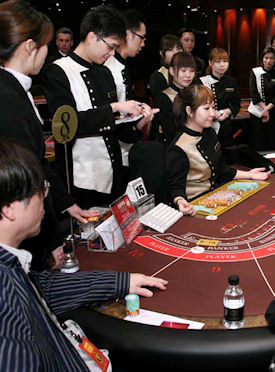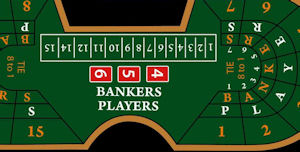This article first appeared in the Mar/Apr 2013 issue of World Gaming magazine.
Can you believe this is the 22nd issue of World Gaming magazine? If you count the infamous “issue zero“, it’s actually our 23rd issue!
 Time flies when you are having fun, and we are proud to have stood the test of time and can now justifiably call ourselves the biggest and best authority when it comes to all things gaming in the Asia Pacific region.
Time flies when you are having fun, and we are proud to have stood the test of time and can now justifiably call ourselves the biggest and best authority when it comes to all things gaming in the Asia Pacific region.
Gaming in Asia is exploding and there is no shortage of stories – if the world stopped turning right now, we would still have enough things to write about for the next five years! But readers often ask us to re-cover stories that have previously been published. While we could re-write them, we thought it might be fun to start re-printing one of our favorite articles from the past in each issue, exactly as it was back then, but with our up-to-date commentary on what we wrote in the past.
For this issue we have chosen “The history of baccarat”, an article that appeared way back in issue zero, our November 2009 pre-launch issue. As that was only a test run with a mere 1,000 copies printed, we also ran this article in issue #3 (Mar/Apr 2010).
We thought this was a great place to start as we received some interesting responses to this piece when we first printed it. It’s amazing how a game that is such a massive part of the gaming landscape, especially in Asia, doesn’t have a clear history. There is a long list of people who claim to be behind the modern-day game of baccarat – a game responsible for 91 percent of the gaming turnover in Macau last year!
We hope you enjoy our first ever “Blast from the past” article. Please remember all our past issues and articles are archived on our website, www.wgm8.com.
THE HISTORY OF BACCARAT
The origin of modern day baccarat is still debated from country to country. The most common belief is that the game originated in Italy. Then the French embraced baccarat and made it their own with the Americans transforming baccarat into the game we know today. Finally the Chinese made it the biggest table-gambling game in the world.

The word baccarat means zero in both Italian and French so the name doesn’t really help us in determining the origin of the game. The Italians claim that baccarat was invented by Italian gambler, Felix Falguiere in the Middle Ages and he played it with tarot cards not with playing cards. The story goes that the game was based on an old Etruscan ritual of nine gods, who prayed on their tip toes to a blonde virgin and waited for her to throw a nine-sided dice. If she threw an eight or a nine she would become a priestess; if she threw a six or a seven she would be banished and if she threw any number less than six she would walk into the sea. This really has nothing to do with baccarat as we know it today, but it is an interesting story nonetheless!
What we do know for sure is that a game known as baccarat found its way into the gambling dens of the French aristocracy centuries ago. The French would embrace the game for hundreds of years before it became the modern day casino game that we all love today.
There is a French version of the game known as chemin de fer. In this version of the game the casino operates as the controller and moderator and simply takes a commission for their service. This makes the game similar to poker for the casino as they don’t actually lay any bets themselves. For this to be profitable the game was played only by the rich and the stakes were very high. Baccarat became popular in England and in South America and finally Tommy Renzoni brought the game to the US in the late 1950s after the Cuban government closed the Havana Casinos around the same time.
The problem with the original game was that it was complicated to run and you needed a group of players all looking to wager a similar amount of money. The game took up a lot of space and casinos were not simply happy to act as controllers; they wanted to be in on the action. This is where the term mini baccarat was coined and the game we enjoy today was born. It was called mini because the table used was a lot smaller than the huge tables that were used in the other previous forms of the game.

What was then called mini baccarat is now known simply as baccarat, although the expressions mini-baccarat, midi-baccarat and big baccarat are sometimes used by casinos to describe the format of the game and size of the table. All big baccarat games and some midi-baccarat games are “squeeze games”, meaning the players are allowed to hold and squeeze the cards, slowly revealing the hand’s value with high drama. This is a big part of the game, especially in high stakes baccarat. The game is played in casinos all over the world but the epicentre of the game is certainly Macau where it is the most popular table game by a significant margin. Baccarat accounts for nearly 90 percent of all gaming revenue in Macau.







